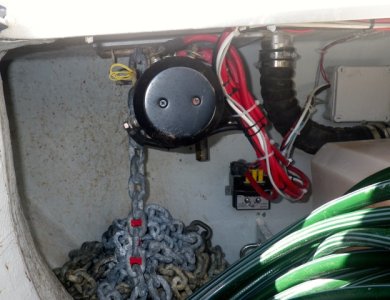Sandy
Well-known member
I’ve had to replace the electrical anchor windlass. On removing the old one a previous owned had done a good job and the electrical wiring was what I would describe as ‘semi-permanent’, which I consider a contributory factor to the demise of the old windlass.
Can anybody suggest a waterproof electrical connector, it will be living in the anchor locker at the pointy end, suitable for 8mm2 or AWG 8 wiring to join the power leads.
Can anybody suggest a waterproof electrical connector, it will be living in the anchor locker at the pointy end, suitable for 8mm2 or AWG 8 wiring to join the power leads.

